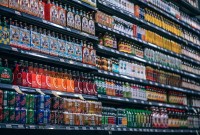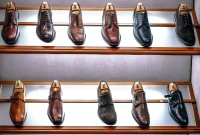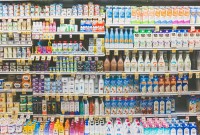- Home
- Business Processes
- Industry Knowledge
- Aerospace Industry
- Automotive Industry
- Banking Domain
- BFSI Industry
- Consumer/ FMCG Industry
- Chemicals Industry
- Engineering & Construction
- Energy Industry
- Education Domain
- Finance Domain
- Hospitality Domain
- Healthcare Industry
- Insurance Domain
- Retail Industry
- Travel and Tourism Domain
- Telecom Industry
- Leadership Skills
- eLearning
- Home
- Industry Knowledge
- Consumer/ FMCG Industry
- Retail Industry – Drivers & Dynamics
Retail Industry – Drivers & Dynamics
To succeed in the retail sector, retailers must offer compelling value propositions and be responsive to market dynamics. The continued rise of e-commerce has altered the dynamics of the retail industry in such a way that has forced retailers to drastically reallocate their resources to multi-channel strategies. This article focuses on retail industry drivers and dynamics that provide the reader with a basic understanding of the factors that influence this trade. Understand the business drivers and dynamics of retail industry
Retail trade is widely known as a very competitive area of commercial endeavor, and for entrepreneurs who launch a retail store on an adequate foundation of capital, business acumen, and attractive merchandise, involvement in the trade can be rewarding on both financial and personal fulfillment levels. Like all industries, the retail industry is subject to various business drivers that influence the direction of this industry.
Given below are the key drivers of the retail industry:
1. Consumer-Focused Selling:
While salespeople regularly call on institutional customers, to initiate and conclude transactions, most end-users or final customers, patronize stores. This makes store location, product assortment, timings, store fixtures, sales personnel, delivery, and other factors, very critical in drawing customers to the store. The focus should be on the customer, his demand, and his changing tastes and preferences. Due to the diversity of the country, standardization is impossible for the entire population.
2. Disposable Incomes:
The retail industry depends on customers who have sufficient disposable income to spend on goods and services. The economic state of any nation determines and influences the amount of disposable income that people have. Factors such as lower savings rates and higher debt levels in developed markets compared to developing markets such as China and India is slowing down the retail industry in these markets. However, in the developing market the growth is leading to increased turnover for retail industries.
3. Simple over Complex:
As life becomes more complicated and stressful, simple things will be preferred over-complicated and difficult to understand products and services.
4. Convenience:
Each customer wants to save as much time as possible. Thus, the focus should be on providing improved service through properly trained staff providing customer convenience. Final customers make many unplanned purchases. Therefore, retailers need to place impulse items in high traffic locations, organize, store layout, trains salespeople in suggestion, and place related items next to each other, to stimulate purchase.
5. Demographics /Store Location:
Location is critical to the success of a retail store. Different segments of the population are looking for different products and shopping environments. A store's trading-area is the area surrounding the store from which the outlet draws a majority of its customers. The extent of this area depends upon the merchandise sold. To be successful, retailers need to know who they are trying to sell their products. For example, some people might be willing to travel a long distance to shop at a specialty store because of the unique and prestigious merchandise offered. Factors affecting the site include traffic patterns, accessibility, competitors' location, availability and cost, and population shifts within the area.
6. Segments:
Population growth is currently occurring in the older and younger generations. The younger generation tends to be more interested in entertainment, technology, and recreation. They prefer to go to large chains rather than neighborhood stores.
7. Target Markets:
Although retailers normally aim at the mass market, a growing number are engaging in marketing research and market segmentation, because they are finding it increasingly difficult to satisfy everyone. Through a careful definition of target markets, retailers can use their resources and capabilities to position themselves more effectively and achieve a differential advantage.
8. Margin & Turnover:
Successful retail operations depend largely on two main dimensions: margin and turnover. How far a retail enterprise can reach in margin and turnover depends essentially on the type of business (product lines) and the style and scale of the operations. In addition, the success of the retail enterprise also depends upon the professional competence of the enterprise. In a given business two retail companies may choose two different margin levels, and yet both may be successful, provided the strategy and style of management are appropriate.
9. Store Image & Trust:
A store image is the mental picture, or personality of the store, a retailer likes to project to customers. Image is affected by advertising, services; store layout, personnel, as well as the quality, depth, and personal dealing with the customers. The customer frequents that retailer who is able to develop a relationship trust with the end customer. Many consumers today are looking for retailers that share their values and provide good corporate citizenship.
10. Merchandise Management:
This is a critical business driver as this is the knowledge to identify the merchandise that customers want and make it available at the right price, in the right place at the right time. Merchandise Management includes merchandise planning, merchandise purchase, and merchandise control.
11. Multichannel Retailing:
Multichannel retailing involves online retailing, which is a fast-growing market in the retail industry. This involves cross-channel services, such as cross-channel stock merchandising and management, home delivery, and visibility of customer transaction data across channels. Maintaining low cost of operations
12. Changing Consumer Habits:
Consumers have changed their spending habits over the years and they keep on constantly evolving. In the 1950s, families typically spent more on food than they did on housing, clothing, fuel, and transportation combined and the 70s brought big changes in lifestyles and spending patterns. In the 1980s and 1990s, premium and luxury products became more available to the average consumer. And increased Internet usage and advances in mobile technology changed the ways consumers make their purchases in the 2000s.
Some other factors that are influencing industry are an investment in appropriate and cost-effective technology; focus on customer service and loyalty, building a reliable supply chain and logistics systems, making and maintaining private brands, and reducing shrinkage and pilferage.
Related Links
You May Also Like
-
Retail Industry – Drivers & Dynamics
To succeed in the retail sector, retailers must offer compelling value propositions and be responsive to market dynamics. The continued rise of e-commerce has altered the dynamics of the retail industry in such a way that has forced retailers to drastically reallocate their resources to multi-channel strategies. This article focuses on retail industry drivers and dynamics that provide the reader with a basic understanding of the factors that influence this trade. Understand the business drivers and dynamics of retail industry
-
Challenges in Consumer Goods Industry
There are tens of thousands of general consumer products manufacturers in the United States. They compete to develop the best products at the most affordable price for the greatest number of consumers. Challenges for these organizations include meeting the changing demands of customers, maneuvering through a consolidating market, and executing strategies to grow profitably.
-
All of us are consumers, from cradle to grave, to be more precise, from the womb to grave or cremation. In a sense, the history of the consumer is the history of mankind. Consumers are the largest economic group in any country. They are the central point of all of our economic activities. But the very same consumers ate the most voiceless group also. The nature of consumer in terms of needs, consumption patterns, and problems has been changing and evolving along with the social and economic development in the course of history.
-
Retail Industry: Revenue Model
Understand the traditional retail revenue model and, what are the variations in different revenue models adopted by key players in the retail industry. Analyze the pros and cons of various models. The most common and most profitable revenue model is that of the traditional retailer. The traditional retailer profits by selling products and services directly to buyers at a mark-up from the actual cost.
-
Retail Industry: Current Challenges
Today consumers are choosing multichannel buying experiences and expect that to be a seamless experience. To attract customer loyalty, retailers need to provide an experience that stands out from others. Learn the challenges faced by the retail sector today. Multi-channel sale avenues, changing consumer behavior, technological advances, rising competition, rising frauds, and supply chain management are some of them that require immediate attention.
-
The retail value chain defines a series of actions that enable businesses to sell their products to customers. Value Chain for any industry describes how an industry is structured and its methods for maximizing revenues. Learn the value chain of the industry. Learn about the key partners, key activities, cost structures, and revenue streams of the retail sector. The value/supply chain analysis reveals the business activities which comprise the movement of retail goods.
-
Consumers benefit from retailing as retailers perform marketing functions that make it possible for customers to have access to a broad variety of products and services. Retailing also helps to create a place, time, and possession utilities. A retailer's service also helps to enhance a product's image. Retailing has a tremendous impact on the economy. It involves high annual sales and employment. Learn the importance of the retail industry in this article.
-
Retail Industry - Business Model
A retail business model articulates how a retailer creates value for its customers and appropriates value from the markets. In retail, a business model would dictate the product and/or services offered by the retailer, the pricing policy that he adopts. Many different types of retail establishments exist, and, the overall industry has seen a significant blurring of the boundaries that separated the wide range of retail businesses. Understand the key business models adopted by the retail industry. Understand the distinctive ways that retail industry players use to reach to the end consumer.
-
Business Dynamics of Consumer Industry
The consumer goods industry is impacted by many dynamics like economic considerations, product considerations, price considerations that impact consumer buying choices. Advertisements, branding, marketing, variety of goods, and technology are the main drivers. Manufactures, retailers, warehousing, and logistics are all part of the supply chain for the consumer goods industry.
-
FMCG or consumer packaged goods (CPG) are products that are sold quickly and at relatively low cost, examples include non-durable goods such as soft drinks, toiletries, and grocery items. They generally sell in large quantities, so the cumulative profit on such products can be substantial and these industries often operate on thin margins.
Explore Our Free Training Articles or
Sign Up to Start With Our eLearning Courses

About Us
Learning
© 2023 TechnoFunc, All Rights Reserved









